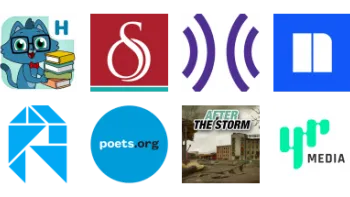Take a look inside 10 images
LightSail
Pros: Tons of opportunities for assessment and feedback, and impressive accessibility options for readers.
Cons: Some embedded assessments are deeper than others, and some users might balk at making pleasure reading so data-driven.
Bottom Line: A powerful literacy platform for developing and empowering readers, with useful customization features for both teachers and students.
Teachers can use LightSail to monitor their students' reading in real time and in great detail. Teachers and students can monitor students' per-page progress through books in addition to students' performance on Common Core-aligned assessment tasks throughout the texts. Teachers can engage in written dialogue with students about their reading through the built-in note-taking and messaging features. In the classroom, teachers might use LightSail to generate reading groups, or they might use it as a way to evaluate student progress broadly and focus class time accordingly. It'd be helpful if teachers pointed out the Power Texts (marked with a green lightning bolt) to students -- these are texts that'll challenge students to grow their reading skills. This way they can focus on the readings (when they don't have assignments) that'll best benefit them. Teachers should also show students the myriad reading customization features (font size, highlighting, etc.), and work with each student to adjust the experience based on accessibility needs.
All of the content and activities are aligned with both Common Core State Standards (CCSS) and general reading strategies, so teachers, including those not using CCSS, can be sure that what they are planning with students is relevant and developmentally appropriate. To further support teachers, LightSail has classroom videos, lesson plans, and daily guides as a starting point for instructional planning. Plus, the Content Builder tool enables teachers to add even more texts to the platform. Consider adding web articles, PDFs, Google Docs, and other materials from your classroom to the LightSail platform so that you can make it a true one-stop shop for student reading -- and so that you can use the same powerful tools in new places.
LightSail (sometimes called Rosen-LightSail) is an e-reading literacy platform that helps teachers support their students' independent reading. Students can use LightSail to check out texts from their schools' digital library and read the books directly on their devices. The library of 6,000 texts can be expanded in a couple of ways. First, teachers can purchase books from a store. Second, teachers can upload their own texts in a variety of formats (including ePub, Google Docs, and PDF) and create their own books and assignments with the Content Builder tool. As students progress through a book, questions appear to gauge their comprehension, from simple multiple-choice Cloze-style questions to longer narrative responses. As students complete these assessments, they earn badges and also earn a Lexile measure, an evaluation of their current reading level based on their answers to the reading comprehension questions and the difficulty of the particular book. The Lexile measure is updated in real time with each assessment. Students always have access to their own data on the student home screen, which displays their per-page reading progress, their earned badges from completed tasks, and their Lexile score. Teachers can also view students' data in real time and post to a class-wide leaderboard to celebrate student successes and milestones.
As students select texts, other recommended reads appear on the home screen. These books might include a green lightning bolt indicating a Power Text: This lets students know that a book will give them a bit of a challenge and help them develop their skills. Students can also browse the library, sorting books by language, Lexile level, and fiction or nonfiction. Teachers can sort similarly and assign specific students or groups of students appropriate texts for their current level. Students can make notes as they read, and their teachers can view students' annotations (which show the relevant highlighted text) and then respond to notes, allowing students to engage in dialogue with their teacher as they read. A student's portfolio captures the text and annotations, so students might use their short-form notes for writing longer essays later. Teachers can annotate text, too, and those annotations can extend to all classes or academic areas. Usefully annotations -- called Thoughts -- can be written or spoken.
Using LightSail is a district- or school-wide endeavor, requiring schools to license texts and manage a digital library, and it's unlikely that teachers could elect to adopt LightSail for their classroom without the support of their school or district.
Full Disclosure: LightSail and Common Sense Education share a funder; however, that relationship does not impact Common Sense Education's editorial independence and this learning rating.
LightSail is appealing because it's so responsive. It's exciting to feel that a list of recommended reads has been curated just for you, and it's encouraging to know that consistent engagement with increasingly difficult texts can result in better scores. Some assessments are richer than others, but all assessments seem meaningful; it's clear to students that they're being tested to ensure that they're engaging effectively with texts. Since students can see their progress on the home screen, and the Power Texts that'll challenge them, they're encouraged to take control of their learning and develop their skills. There are other impressive ways that students are put at the center of the experience, too. From student-created books to annotations to the vast array of text customization, students aren't just passive participants but active learners.
Perhaps the most impressive aspect of LightSail is the developer's commitment to improvement and innovation, especially when it comes to accessibility. In addition to solid built-in features for text-to-speech, font adjustment, text chunking, and dictation, LightSail offers extensive dictionary features, including special support for English language learners. Other big improvements have included support for offline reading (when you access the platform on an iPad), single-sign-on capability from other common platforms (like Google, Microsoft, and Clever), and a Content Builder and Fluency Builder that enables teachers to add their own texts and create their own questions and assignments.



















